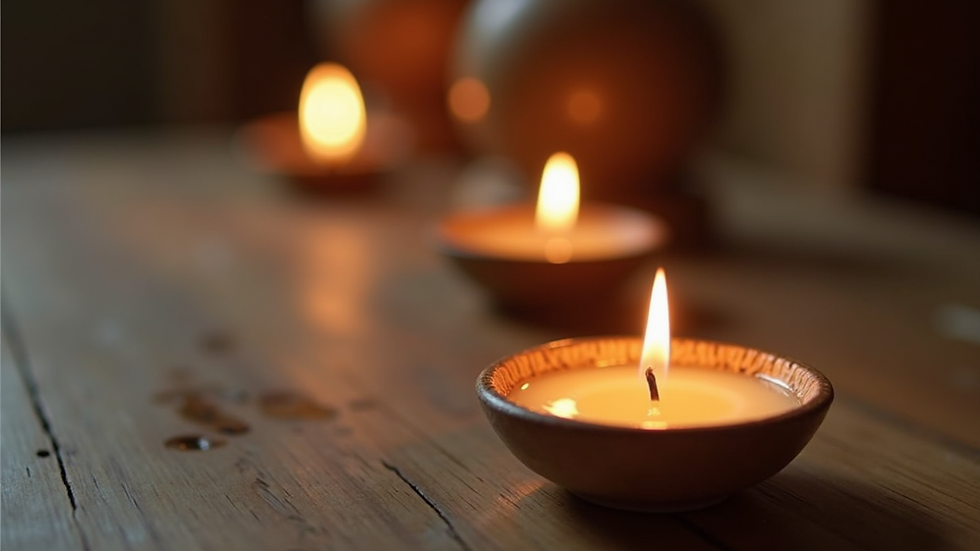Personalized Guided Meditation for Inner Peace
- rlbailey82
- Oct 2
- 4 min read
Finding inner peace during challenging times can feel like a distant dream. When life brings us face to face with profound transitions, such as the end-of-life journey, the need for calm and clarity becomes essential. I have discovered that personalized guided meditation offers a gentle path to emotional healing and serenity. It invites us to slow down, breathe deeply, and connect with our innermost selves in a compassionate way.
In this post, I will share how meditation for emotional health can support you or your loved ones during sensitive moments. Together, we will explore practical steps to create a personalized meditation practice that nurtures peace and acceptance. Let’s begin this journey with kindness and openness.
The Power of Meditation for Emotional Health
Meditation is more than just sitting quietly. It is a powerful tool that helps us manage emotions, reduce stress, and find balance. When facing difficult transitions, emotional health can feel fragile. Meditation offers a safe space to acknowledge feelings without judgment and to cultivate resilience.
Personalized meditation adapts to your unique needs. It respects where you are emotionally and physically. For example, if anxiety feels overwhelming, a meditation focusing on grounding and breath awareness can bring relief. If sadness or grief is present, meditations that invite gentle acceptance and self-compassion can be healing.
Some benefits of meditation for emotional health include:
Lowering stress hormones and calming the nervous system
Enhancing self-awareness and emotional regulation
Improving sleep quality and reducing fatigue
Encouraging a sense of connection and belonging
Supporting spiritual well-being and meaning-making
By making meditation a regular practice, you create a foundation of calm that supports you through life’s ups and downs.

How to Create Your Personalized Meditation Practice
Personalizing your meditation means tuning into what feels right for you. Here are some steps to help you build a practice that fits your emotional and physical state:
Set an intention
Begin by asking yourself what you need most. Is it peace, courage, acceptance, or something else? Your intention will guide the meditation focus.
Choose a comfortable space
Find a quiet spot where you feel safe and undisturbed. It could be a cozy corner, a garden bench, or even your bed.
Decide on the meditation length
Start with just 5 to 10 minutes if you are new. You can gradually increase the time as you feel more comfortable.
Select a meditation style
Options include breath awareness, body scan, loving-kindness, or visualization. You might try different styles to see what resonates.
Use guided meditation resources
Sometimes, having a gentle voice to lead you can be very comforting. You can explore guided meditation sessions designed specifically for emotional support during transitions.
Be patient and kind to yourself
Meditation is a practice, not a perfect performance. Allow yourself to experience whatever arises without criticism.
By following these steps, you create a meditation practice that feels like a personal sanctuary.
What Do You Do in a Guided Meditation?
Guided meditation is like having a caring companion who gently leads you through the process. Here’s what typically happens during a session:
Settling in
You begin by finding a comfortable position, either sitting or lying down. The guide invites you to close your eyes and take a few deep breaths.
Body awareness
The guide may ask you to notice sensations in your body, starting from your feet and moving upward. This helps ground you in the present moment.
Breath focus
Attention shifts to the breath, observing its natural rhythm without trying to change it. This simple act calms the mind.
Visualization or imagery
You might be invited to imagine a peaceful place, like a quiet forest or a gentle stream. This imagery soothes and relaxes.
Affirmations or intentions
The guide may offer kind words or phrases to repeat silently, such as “I am safe” or “I am at peace.”
Closing and reflection
The session ends with a gradual return to awareness of the room and your surroundings. You are encouraged to carry the calm with you.
Guided meditation sessions can be especially helpful when emotions feel intense or when you are new to meditation. They provide structure and reassurance, making the experience accessible and nurturing.

Practical Tips for Deepening Your Meditation Experience
To make the most of your meditation practice, consider these practical tips:
Create a routine
Try to meditate at the same time each day. Consistency builds a habit and signals your mind to relax.
Limit distractions
Turn off phones and other devices. Use earplugs or white noise if needed to create a quiet environment.
Use props for comfort
Cushions, blankets, or eye masks can help you stay comfortable and focused.
Journal your experience
After meditation, write down any thoughts, feelings, or insights. This reflection deepens self-awareness.
Be gentle with yourself
Some days meditation feels easy; other days it may be challenging. Both are okay. Approach your practice with compassion.
Explore different formats
Try audio recordings, live sessions, or apps to find what suits you best.
Involve loved ones
Meditating together can foster connection and shared calm.
By integrating these tips, your meditation practice becomes a supportive companion on your journey toward inner peace.

Embracing Meditation as a Path to Peaceful Transitions
Meditation offers a gentle way to navigate the emotional landscape of life’s final chapters. It helps us face uncertainty with courage and grace. When we cultivate inner peace, we create space for meaningful connection, acceptance, and love.
If you or your family are seeking compassionate support during this time, consider exploring guided meditation sessions tailored to your needs. These sessions can be a source of comfort and strength.
Remember, meditation is not about escaping reality but about meeting it with an open heart. Each breath, each moment of stillness, brings you closer to a place of calm and clarity. Let this practice be a gentle companion as you walk your path with dignity and peace.
May your journey be filled with kindness and light.


Comments